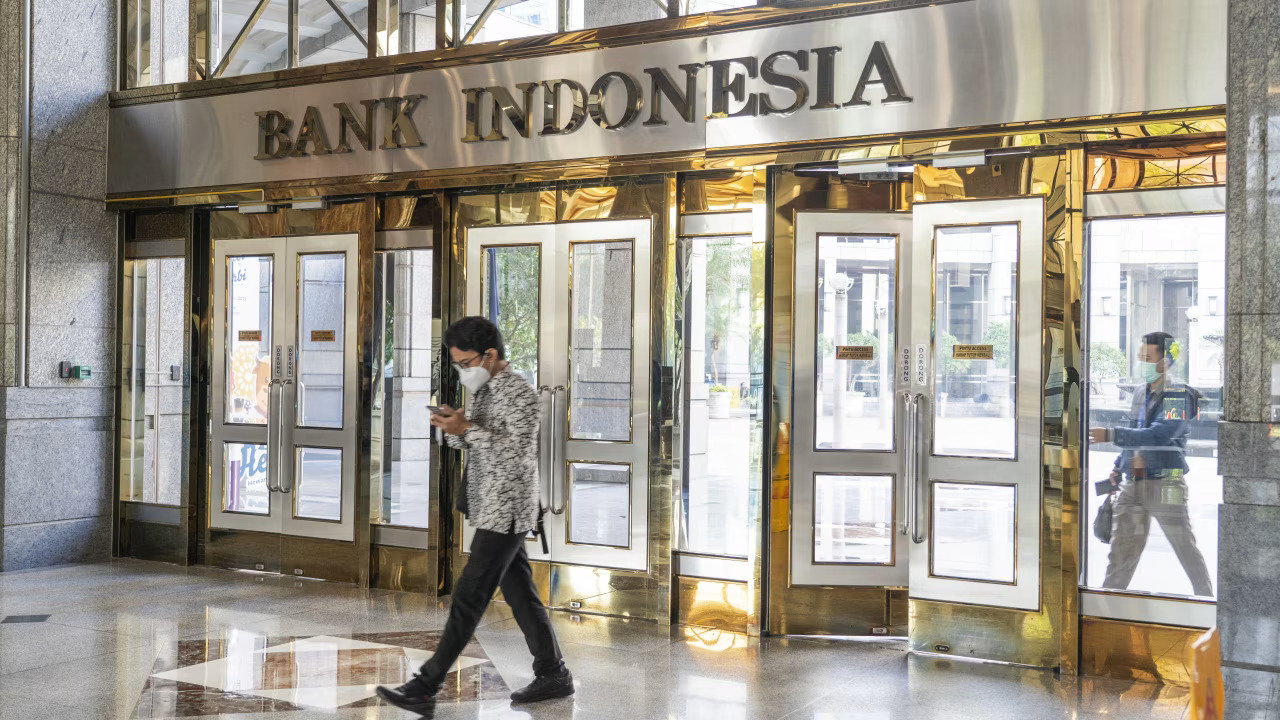
John Hawk Insunrated – Bank Indonesia surprised markets by deciding to hold its policy rate steady at 4.75 percent during the latest Board of Governors Meeting on October 21 to 22. This decision came after six consecutive cuts since September 2024, bringing the Deposit Facility rate to 3.75 percent and the Lending Facility rate to 5.5 percent. Economists have expressed divided opinions on whether further easing is necessary or if a pause would be more prudent.
Bank Danamon economist Hosianna Evalita Situmorang argued that October could have been the final window for a rate cut this year to mitigate risks to the currency and inflation. In contrast, Paramadina University economist Wijayanto Samirin suggested that BI should adopt a more conservative approach, maintaining the rate to preserve policy space. Market participants reacted quickly, assessing the implications for the rupiah lending activity and domestic economic growth. The decision also signals BI’s careful balancing of inflation stability and economic stimulus.
Bank Indonesia has lowered its benchmark rate six times over the past year, reflecting its focus on supporting domestic consumption and economic growth. The central bank has reduced the Deposit Facility rate to 3.75 percent while maintaining the Lending Facility rate at 5.5 percent. These measures aimed to increase liquidity, reduce borrowing costs, and stimulate demand. Despite the rate cuts, domestic consumption remains weak and inflation has remained stable. Bank Indonesia’s policy adjustments also respond to global economic uncertainties, including currency volatility and rising government bond yields. Economists are watching closely to see whether the central bank will continue easing or pause to evaluate the transmission of rates to the financial sector. Bank Indonesia faces the challenge of ensuring that lower rates effectively encourage lending and investment while preventing excessive risks to financial stability. The current pause reflects caution amid both domestic and international economic pressures.
“Read about: Sanae Takaichi Breaks Barriers in Japan, So Why Are Some Women Angry?”
Economists remain divided over the need for further rate cuts by Bank Indonesia. Hosianna Evalita Situmorang believes that BI should continue easing, noting that this may be the last opportunity this year to reduce rates without triggering negative currency or inflation shocks. She projects a potential cut to 4.5 percent. On the other hand, Wijayanto Samirin cautions against further reductions, arguing that previous cuts have already been aggressive and that the central bank should maintain room for policy flexibility. He highlights inefficiencies in the transmission of benchmark rates to lending and funding rates in the financial sector. Factors such as weak demand, global dynamics, and government bond yields have slowed the impact of rate adjustments. This disagreement underscores the challenges Bank Indonesia faces in navigating economic growth while safeguarding financial stability and maintaining confidence in its policy direction.
“Read more: Chess World in Shock! Beloved Grandmaster Daniel Naroditsky Dies Suddenly at 29”
The rate hold by Bank Indonesia has significant implications for the domestic economy. With inflation stable and liquidity ample, the decision suggests a careful approach to sustaining growth without overheating the economy. Rate cuts can stimulate borrowing and investment but the slow transmission in the financial sector limits immediate effects. Businesses and households may still face high financing costs despite lower policy rates. Bank Indonesia’s cautious stance reflects the need to balance monetary easing with financial stability. Economists argue that a measured approach could prevent potential risks while supporting long-term growth. The central bank’s actions also influence the rupiah and investor sentiment, affecting capital flows and domestic consumption patterns. Market participants are closely monitoring how this pause will impact borrowing behavior and economic activity in the coming months.
Analysts reacted immediately to Bank Indonesia’s unexpected rate hold, assessing the impact on currency, lending, and investment trends. The rupiah experienced short-term fluctuations as traders evaluated the central bank’s policy stance. Investors are now speculating whether Bank Indonesia will resume rate cuts before the year-end or maintain a conservative approach. Hosianna and Wijayanto provide contrasting forecasts, with some expecting further easing and others predicting stability. The financial sector continues to face sluggish transmission of policy rates, limiting immediate effects on lending and funding. Bank Indonesia’s next moves will likely consider both domestic economic performance and global market conditions. Analysts suggest that the central bank may weigh inflation, consumption, and external risks before taking further action to ensure sustainable growth and financial stability.
This article is sourced from jakartaglobe and for more details you can read at johnhawkinsunrated
Writer: Sarah Azhari
Editor: Anisa
John Hawk Insunrated - Artists, workers, and students increasingly turn to creative practices for wellbeing to manage stress and protect…
John Hawk Insunrated - Many artists rely on personal sketchbook creative freedom to explore ideas safely without pressure or judgment.…
John Hawk Insunrated - Many professionals are experimenting with new skills to stay relevant, yet few truly analyze what works…
John Hawk Insunrated reports how the viral soft life nervous system content on TikTok mixes soothing visuals with mixed advice…
John Hawk Insunrated highlights standout DIY experiments from this year that blend fun, learning, and simple tools at home. Why…
John Hawk Insunrated highlights favorite DIY experiments this year that blend simple household items with impressive scientific and artistic results.…